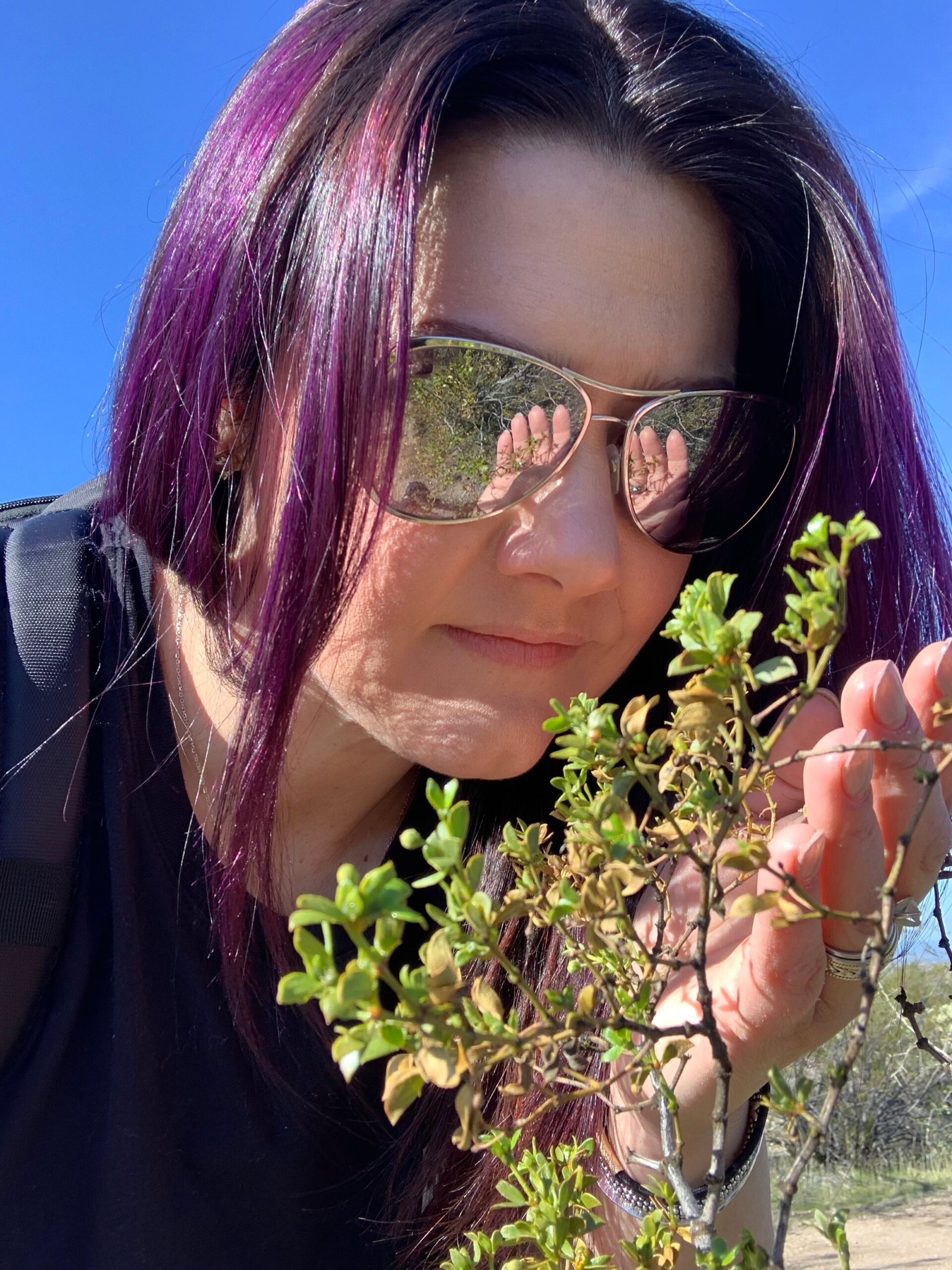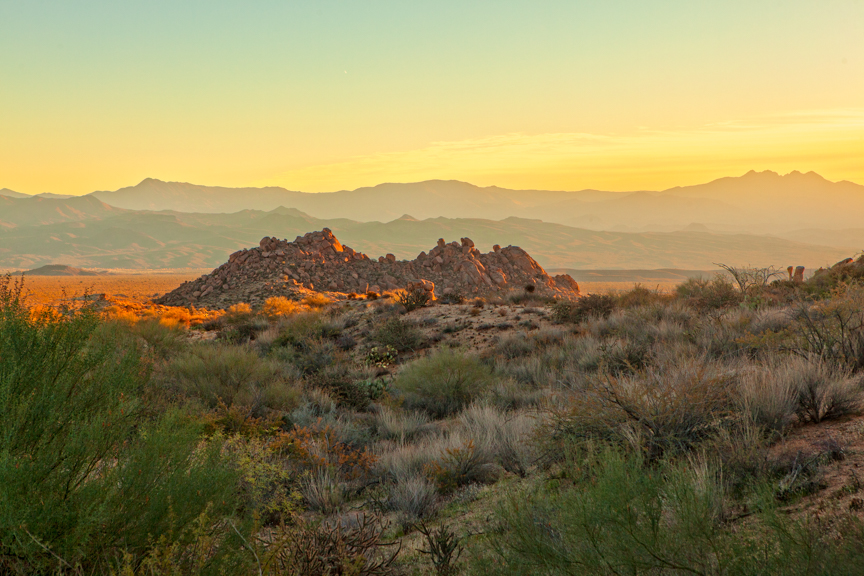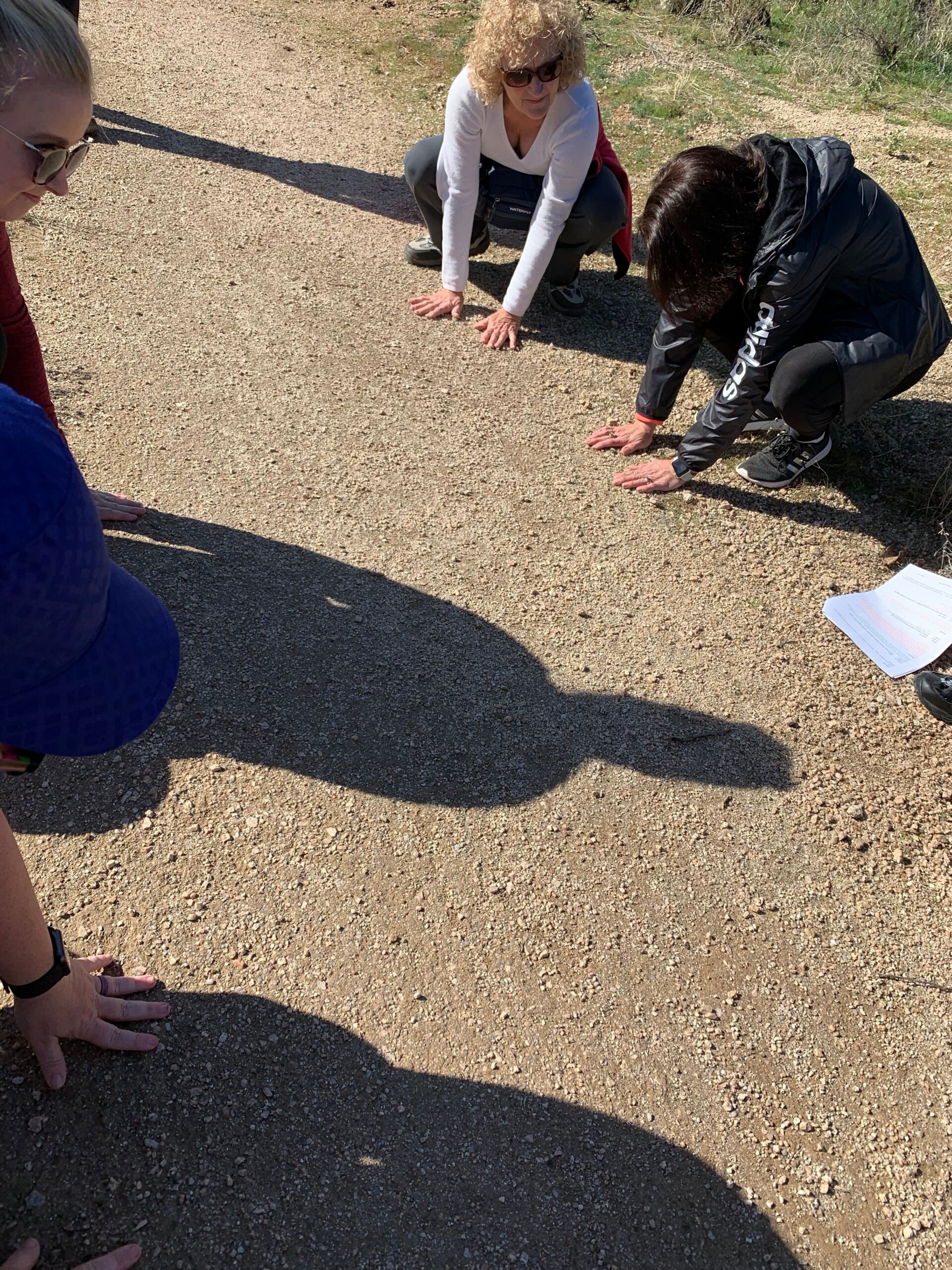Toni Vallee, Master steward McDowell Sonoran Conservancy, and Katy Lindberg RNC/COGNP, Lead steward McDowell Sonoran Conservancy
Frazzled by the COVID-19 pandemic? Getting casita fever (but not from the virus)? There are proven ways to improve your physical and mental health during difficult times or everyday life. Over the last 20–30 years, innovative scientific research, aided by the miniaturization of tools to test human biomarkers, has enabled scientists to tease out whether being in nature can improve a person’s overall health. The verdict is in: being in nature has measurable positive impacts on your physical and mental well-being.
Many people notice feeling better after a walk, a run, or a bicycle ride. Scientists have sought to answer the question of whether it is being out in nature or exercise that improves well-being. Many creative experiments have been developed to answer that specific issue. Scientists have used biomarkers and psychological tests to determine if there is a specific value in being out in nature separate and distinct from exercise. How do you get access to these benefits? Using your senses and doing an activity we call “nature walking” can demonstrably improve both your physical and mental health.
Using your sense of smell to breathe in the pleasant scent of flowers or the creosote bush has been shown to reduce stress hormones in our bodies by up to 57%. Blood pressure has been reduced by up to 5–7%—the equivalent of many blood pressure drugs. Many plants contain antibacterial aromatic volatile compounds that boost our immune system Killer T-cells to help fight illness and fatigue.
Hearing the sounds of nature, specifically the musical sounds with high trills of songbirds, has been shown to relax people. Seeking quiet places outside, where you can hear songbirds, while away from noise pollution, can help improve many aspects of physical and mental well-being.
Touch, the sense that includes our largest organ, our skin, enables us to be more mindful. Take some time to feel the sun on your skin, the wind through your hair, the texture of a plant leaf, or the bark of a tree. Mindfulness has been shown to help relieve stress, treat heart disease, lower blood pressure, reduce chronic pain, improve sleep, and alleviate gastrointestinal difficulties. Another aspect of touch, allowing your body to physically touch the elements of the earth, including the ground, plants, rocks, etc. without any intervening elements like rubber soles, has been shown in National Institutes of Health published research to improve sleep, reduce pain and stress, and speed wound healing. https://www.researchamerica.org/advocacy-action/issues-researchamerica-advocates/disease-prevention-and-public-health
A sense of awe, although not a physical human sense, is defined as “an overwhelming feeling of reverence, admiration, fear, or wonder produced by that which is grand, sublime, or extremely powerful.” Awe is the only one of the core human emotions that have shown a reduction in chronic inflammation levels linked to depression, stress, and poor muscle repair. Cultivating a sense of awe while out in nature is easy to do. Seek out a beautiful tree, a hummingbird darting about, or the blooms of a saguaro.
Vision: Taking in the beauty of nature is a pleasure of life for many people. Looking at a mountain-scape, cloud, or tree is very calming. When looking at a palo verde, it doesn’t seem to have any order. But there is a trunk that splits into branches, which split into leaves. These types of patterns are called fractals. Human brains respond to fractal images, and those images calm us. Humans can recover from stress 60% faster when viewing fractal images common in nature. Fractal images enable the production of the alpha waves of a relaxed state of mind. These scenes are easy for humans to process and may also trigger natural opiates in the brain.
We can access many of these benefits by sitting outside or looking at images. But nature walking, while using one’s senses, adds even greater benefits. Nature walking is mindful and is not about raising heart rates to improve fitness.
Nature walking has been shown to improve memory. It increases divergent creativity, better known as thinking outside the box, with little to no effect on convergent or executive function—enabling people to find solutions to issues or problems causing stress. Walking mindfully helps reduce negative thoughts as blood flow is reduced to that area of the brain. Viewing fractal images, while walking, quiets the brain circuitry involved in self-wallowing.
Should you walk alone or with others? Yes! Walking with other people boosts mood and reduces depression and anxiety. But if you want to solve problems in your life or jolt your creativity, it’s best to go alone, in areas you feel safe. Walk at a moderate pace, always looking forward to any hazards that could precipitate a fall while using your distant and peripheral vision to see nature’s beauty.
To access the benefits of nature, here’s a prescription:
- Daily: get out into your neighborhood
- Weekly: go to a regional green space such as Scottsdale’s McDowell Sonoran Preserve
- Monthly: visit a national park or preserve
- Annually: try a longer, more intense experience
For another way to achieve these benefits, try these walking regimes:
- 30 minutes a day, five days a week, for a short tonic to get rid of the blahs
OR - Three hours a week to lessen depression and increase sociability and self-esteem
Toni and Katy have created a public walk called Nature as Therapy to demonstrate these techniques. For information, please view https://www.mcdowellsonoran.org/events/list. This experience can also be provided as a private hike.
To create this walk, they used information from The Nature Fix by Florence Williams, Your Brain on Nature by Eva M. Selhub, MD and Alan C. Logan, ND, Forest Bathing by Dr. Qing Li, and The Biophilia Effect by Clemens G. Arvay.






